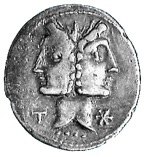The objective of most pilgrims following the Camino de Santiago is reach the city of Santiago de Compostela in Galicia, in the northwest corner of Spain. Some believe that the name of Compostela comes from Latin “campus stellae” meaning field of stars, others believe it comes from “compositum” – burial place. Disagreement about the origins of the city’s name aside, it is a proven fact that there was a pre-Christian necropolis on the site and also that the Path followed by the Camino existed long before the finding of St. James’ remains in the 9th century.
Up until then the route had been known as Via Finisterre (from Latin, the Way to Land’s End) and archaeological sites along it show that Celtic peoples travelled it 1,000 years before Christ in search of Land’s End and the Sun’s resting place, celebrating all sorts of ceremonies, as did other peoples before them‑pagans travelling across northern Spain in a born-aga in ritual on a Megalithic path following the Milky Way. Therefore the origins of the Path are lost in time.
in ritual on a Megalithic path following the Milky Way. Therefore the origins of the Path are lost in time.
Some scholars believe that another clear antecedent to the Camino is the old “Callis Ianus” or “Via Janus” named after the god Janus, who occupied the highest rank among Etruscan-Latin divinities and represented the “Earth’s Axis”, the initiation to the Mysteries, the protection of life on Earth. Janus was the God of gods – the god of beginnings and transitions, thence also of gates, doors, passages, endings and time; the god of motion that caused the starting of action and change; and master of the four seasons and transformation. He is usually depicted as having two faces, since he looks to the future and to the past, to the sun and the moon, and holding a key that opened gates of the invisible world.
According to this belief, the Path follows the direction established by the terrestrial magnetic field in the Iberian Peninsula going East-West from the Temple of Venus Pyrinea (where the Pyrenees mountains drop into the Mediterranean Sea) to Ara Solis (Unconquered Sun) or Finisterre (Land’s End). The tetragram below, Arkho Jano Quirico, is the most frequently repeated stone symbol across Europe’s paths – and can be found in several sites along the Camino. We need to take into consideration that the magnetic pole has changed and in the old days Finisterre was the most western point in mainland Europe. For those knowledgeable about the mysteries of the cult to Janus, the Camino has specific characteristics left by the Masonic masters, by the toponimy of the places and by the old shrines that have protected pilgrims for centuries.

